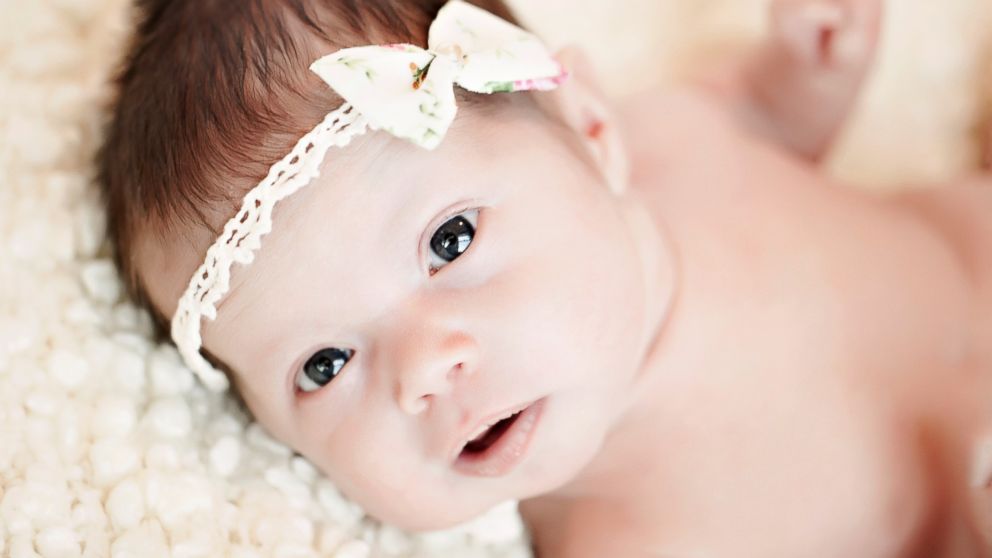UCLA Researchers Announce Gene Therapy Cure for 18 ‘Bubble Baby’ Patients
The breakthrough could lead to advances in the treatment of sickle cell disease.

— -- Researchers at UCLA announced today that they had cured 18 children who were born with the so-called Bubble Baby disease, a genetic disorder that leaves the young sufferers without a working immune system, putting them at risk of death from infections, even the common cold.
A team led by Dr. Donald Kohn, a stem cell researcher at the university’s Eli and Edythe Broad Center of Regenerative Medicine and Stem Cell Research in Los Angeles, developed the breakthrough that cured 18 children who had adenosine deaminase (ADA)-deficient severe combined immunodeficiency (SCID).
“All of the children with SCID that I have treated in these stem cell clinical trials would have died in a year or less without this gene therapy, instead they are all thriving with fully functioning immune systems,” Kohn, a professor of pediatrics and of microbiology, immunology and molecular genetics in the life sciences at UCLA, said in a statement.
There are several forms of SCID. About 15 percent of all SCID patients are ADA-deficient.
Kohn spent more than 30 years of research on finding the cure, UCLA said today when it announced the cure. Kohn and his team tested two therapy regimens on the children over the course of two multi-year clinical trials since 2009, UCLA said.
During the trials, the children's blood stem cells were removed from their bone marrow and genetically modified to correct the defect. All of the 18 patients -- who ranged in age from 3 months to 4 years at the time of treatment -- were cured without any side effects, UCLA said.
The breakthrough has meant a cure for Evangelina Padilla-Vaccaro, who was born with the condition in 2012. Evangelina’s fraternal twin, Annabella, was not affected.
The girls’ mother, Alysia Padilla-Vaccaro, of Corona, Calif., said she had a strong sense that something was wrong with Evangelina just a week after giving birth.
Despite having been told that she was experiencing the stress of being a new mother, Padilla-Vaccaro persisted.
“I just knew something was wrong with my Evangelina,” she told ABC News.
Her fear was later confirmed. The twins’ father, Christian Vaccaro, said he and his wife were devastated to get the diagnosis when Evangelina was just six weeks old.
Evangelina had to be kept in isolation at home. Only immediate family could come into contact with her, and they had to shower immediately prior and wear a mask and gown to hold her.
Kohn said the condition is rare and the affected children “look fine at birth” despite not having a functioning immune system.
Patients born with ADA-deficient SCID must be kept in isolation to protect them from germs. If left untreated, the condition could be fatal within the first year of life, according to UCLA.
The standard treatment for this condition is a bone marrow transplant, but Angelina wasn't a match for her sister. Evangelina qualified for a clinical trial that used the gene therapy.
“It's their own cells so it's a perfect match,” Kohn told ABC News. “And when it works ... they grow a whole immune system, and can lead normal lives.”
UCLA said Evangelina's new immune system developed soon after she underwent the treatment, which included chemotherapy. The process took about seven weeks from beginning to end, Padilla-Vaccaro said.
The little girl is now able to live a normal life. Her parents can take her to the store, the beach and to the playground, and they are grateful.
"To finally kiss your child on the lips, to hold her, it’s impossible to describe what a gift that is,” Padilla-Vacarro said. “I gave birth to my daughter, but Dr. Kohn gave my baby life.”
According to the NLM, ADA-deficient SCID occurs in an estimated 1 in 200,000 to 1 million newborns worldwide.
The next step is to seek FDA approval for the gene therapy, UCLA said.
The research also lays the groundwork for a clinical test of gene therapy in the treatment of sickle cell disease. UCLA says trials are set to start next year.
"We've been working for the last five years to take the success we've had with this stem cell gene therapy for SCID to sickle cell,” said Kohn. “We now have the potential to take the gene that blocks sickling and get it into enough of a patient’s stem cells to block the disease.”




